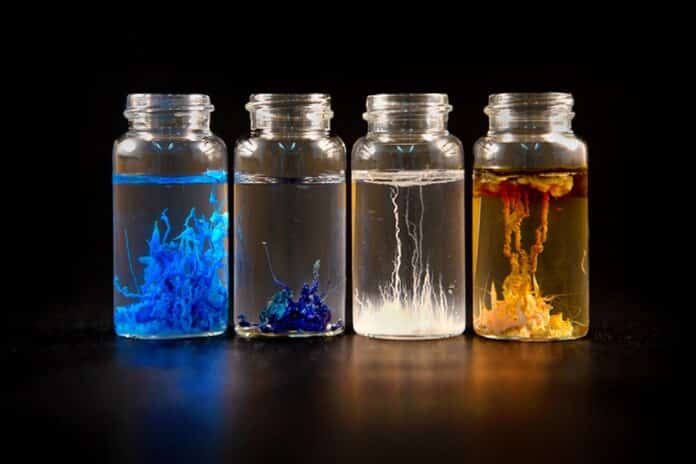In a recent study, researchers from Florida State University (FSU) investigated the growth of chemical gardens, unique plant-like structures formed through chemical reactions in a solution. Through experiments and analysis, the FSU team explored the factors influencing chemical garden formation, such as temperature, reactant concentrations, and pH levels.
The study aimed to uncover the fundamental principles governing these structures, expanding our knowledge of natural self-assembling phenomena. The findings have implications for materials science, chemistry, and even astrobiology, offering valuable insights into chemical gardens’ formation and potential applications across scientific disciplines.
Chemists have long been intrigued by colorful coral-like structures formed by mixing metal salts in a bottle. However, understanding these structures’ growth and formation rules, known as chemical gardens, has been challenging. In a recent study published in the Proceedings of the National Academy of Sciences, researchers from Florida State University present a model that explains the upward growth, varied shapes, and the transition from a flexible, self-healing material to a brittle one in these chemical gardens.
FSU Professor of Chemistry and Biochemistry Oliver Steinbock said, “In the context of a material, it’s very interesting. They don’t grow like crystals. A crystal has nice sharp corners and grows atom layer by atom layer. And when a hole occurs in a chemical garden, it’s self-healing. These are early steps in learning how to make materials that can reconfigure and repair themselves.”
Chemical gardens form when metal salt particles mix with a silicate solution, dissolving and reacting to create a semipermeable membrane that grows upward, resembling coral. First observed in 1646, these structures have fascinated scientists due to their unique formations and connection to hydrothermal vents and the corrosion of steel surfaces, where similar insoluble tubes can develop. In recent years, chemical gardens have gained renewed scientific interest, transitioning from demonstration experiments to subjects of intensive study.
Steinbock, Batista, and Morris developed a mathematical model inspired by experiments injecting a salt solution into a larger silicate solution between two horizontal plates. The model explained the different growth modes and the transition of the material from stretchy to rigid and prone to breaking over time.
The researchers simulated various shape patterns, such as flowers, hair, spirals, and worms. Their model provided insights into the emergence of these patterns during the chemical garden’s development, showing the universality in formation despite variations in salt solutions’ chemical composition. Additionally, the model confirmed the self-healing capabilities of the material, with fresh membranes expanding in response to microbreaches.
The findings of this study represent a significant breakthrough in understanding chemical gardens and their growth processes. By unraveling the essence of shape and growth in these structures, the FSU researchers have paved the way for future investigations into the potential applications of chemical gardens in fields such as materials science and self-assembling systems.
Journal Reference:
- Bruno C. Batista, Amari Z. Morris, et al. Pattern selection by material aging: Modeling chemical gardens in two and three dimensions. Proceedings of the National Academy of Sciences. DOI: 10.1073/pnas.2305172120.
